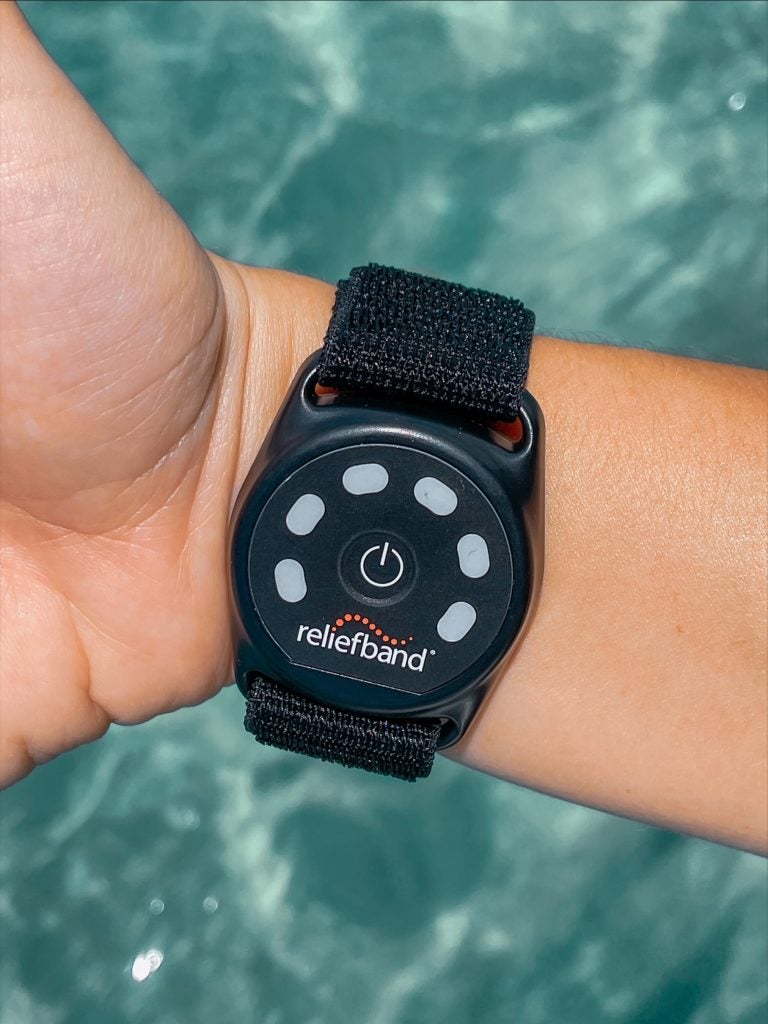
Nausea is one of the most common symptoms people experience. It can arise from a disease, as a side effect from treatment, or everyday activities. Whilst it may be fleeting for some, for others it can persist and interrupt daily life.
While there is a wide range of therapies available for reducing nausea including treatments for chemotherapy-induced nausea, one area that has proliferated recently is the rise of wearable devices. The global wearable tech market is expected to be worth $156bn by 2024, and its use in healthcare has been particularly prevalent.
Wristbands that claim to reduce nausea and vomiting are growing on the market and targeting those who suffer from nausea arising from daily activities, such as travel motion sickness. Some devices, which are available in high street pharmacies, use acupressure techniques. A study investigating nausea alleviation via such bands, however, found no improvement in symptoms.
Other devices are relying on neuromodulation. Pennsylvania, US-based ReliefBand is one such company that claims to “effectively reduce symptoms of nausea and vomiting due to motion sickness, morning sickness during pregnancy, chemotherapy, anxiety, hangovers, physician-diagnosed migraines, and as an adjunct to antiemetics in treating post-operative nausea.”
On May 16th, National Stop Nausea Day, the company released results from an online survey showing that 55% of respondents who suffer from regular nausea do not possess an effective treatment.
ReliefBand’s FDA-cleared technology delivers gentle pulses on the median nerve on the underside of the wrist, which can alter neural pathway activity in the vomiting centre of the brain and block incoming signals from the stomach. The device has had positive clinical results for post-operative nausea.
How well do you really know your competitors?
Access the most comprehensive Company Profiles on the market, powered by GlobalData. Save hours of research. Gain competitive edge.

Thank you!
Your download email will arrive shortly
Not ready to buy yet? Download a free sample
We are confident about the unique quality of our Company Profiles. However, we want you to make the most beneficial decision for your business, so we offer a free sample that you can download by submitting the below form
By GlobalData
However, for alleviating nausea arising from ‘everyday’ issues such as travel motion sickness, virtual reality-induced motion sickness, and migraines, the same pool of scientific data backing the technology does not exist. According to ReliefBand’s recent survey, most nausea was attributable to motion sickness. Of respondents, 49.4% attributed their symptoms to transport, including seasickness (26.0%), carsickness (11.9%), trainsickness (9.6%), and airsickness (1.9%).
It could be said there is a lack of effective and accessible treatment for ‘everyday nausea’. For travellers’ health, the Centers for Disease Control and Prevention (CDC) suggests natural remedies for motion sickness-induced nausea and, for a more steadfast approach, prescription medicine such as diphenhydramine (Benadryl), dimenhydrinate (Dramamine), and scopolamine. The CDC do not yet mention wearable bands.
Whether the new wave of neuromodulatory wrist bands become a go-to drug-free treatment for alleviating nausea, or tablets maintain their hold over technology remains to be seen. But the bands are tapping into an ever-growing market that is seeing wearable tech becoming an ever more attractive consumer option for health management.



